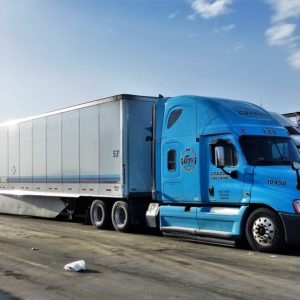According to Road Scholar Transport, “Nearly 70 percent of the freight shipped throughout the United States travels by truck at some point in its journey.” It’s the middle of 2018, and it’s time to look at the trucking industry, it’s performance, and gain insight about where the industry is forecasted to go.
We would like to take a closer look and offer some insight as to where the trucking industry is headed for the remainder of 2018 and into the future. As the economy grows, it is placing an incredible demand on freight transport, especially considering the shortage of drivers available in the U.S. today. ” Freight shipping will boom in the U.S. over the next ten years, with the volume rising from 15.18 billion tons moved in 2017 to 20.73 billion tons in 2028 – an increase of nearly 37 percent,” this is according to a Forecast provided by the American Trucking Association.
According to the American Trucking Associations(ATA); freight loads are beginning to trend upward, however, ‘less than loads’ (LTL) freight loads are trending even higher as many companies explore ways to transport and receive their smaller shipments. Need will continue to produce higher demand and revenue in the trucking industry.
Expected Diesel Fuel Costs –
As stated in a 2018 Kiplinger Energy Prices Forecast, fuel costs across the board are expected to continue rising. As the upset in Saudi Arabia continues to escalate, oil prices will rise leading to price increases for

diesel and gasoline in the U.S. With the uncertainty about the troubles in Saudi Arabia; business persons globally are likely concerned with the possibility of an oil supply interruption. For the trucking industry, this could increase fuel prices significantly for the remainder of 2018.
Should American Consumers Expect Increases in Trucking Rates? –
Yes. Some of the big players, FedEx and UPS at the beginning of 2018 had implemented their 4.9% increases. We all know that eventually prices must rise on nearly everything and these costs must be passed on to the consumer. It’s certainly not something that any company wants to do, but in most cases have no other options.
These increases will not only affect the big players, but small business trucking companies will have to follow suit if they haven’t already. Owning a small trucking business is expensive.
Literally, every aspect of owning a trucking business is expensive. The labor is intensive as well. If the owners don’t raise their rates to increase profitability, they could face having to close their businesses.
As of March 22, 2018, FTR reports ” Tight motor carrier capacity and rate gains continue to remain two of the dominant themes in freight transportation, according to the most recent edition of the Trucking Conditions Index (TCI)…” This is a positive for companies as it indicates an increased level of opportunity to serve more clients/customers in the long run.
Adjustments to Capacity Due to Lack of Trucks and Driver Availability –
Even if there were no shortage at all, there is still the serious concern regarding the industry’s ability to handle the capacity imposed. There are only so many drivers and therefore only so many freight carriers available. With increasing demand, some consumers may have to consider other modes of transporting goods.
The other options would be acceptable; however, these additional options won’t carry directly to the needed locations. This will require additional local transportation and there again, costs rise. A lack of truck capacity could cause a lack of inventory for consumer’s shelves.
How Is Revenue Being Affected in 2018? –
As always revenue will continue to change as it does annually. However, revenue will likely be affected by demand combined with the new EDL restrictions for truckers’ hours, and the continued price increased as well, the desperate need for long-haul carriers.
As more consumers continue to demand more merchandise, more work and increased expenses will be expected from those truckers who will need to ship them. If consumers want these things, they will have to face the fact that they should no longer expect transporters to ‘split the difference’ to get the business. Long haul companies will be forced to increase trucker’s salaries. Although many organizations which closely monitor the trucking industry feel that 2018 will bring positive changes to the industry, adjustments may be needed along the way to keep the positive changes on track.
Driver Shortages –
In 2017 the ATA reported that the trucking industry is currently suffering a shortage of approximately 30 to 35 thousand professional truck operators and states that by 2022, it could reach a shortage of approximately 245,000.
Also, according to the ATA, it’s over the road professionals that are so desperately needed. This appears to be an area of the industry that few people want to work since the pay rates are low and time away from home and family are significant. To recruit long-haul drivers, the salaries for those positions must increase to balance this area of the industry.
At Cogent Analytics, we never stop looking for ways to improve your business and neither should you. So, check out some of our other posts for helpful business information:



